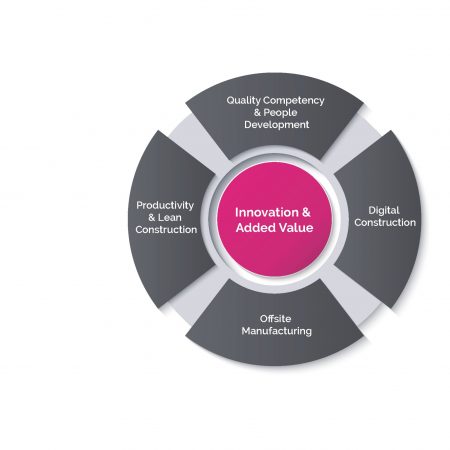How to Live, Think and Deliver Quality, Every Day
Poor quality is a cost that the industry can ill afford. According to the Get It Right initiative the price tag for poor quality in UK construction is between £10bn – £25bn. Whatever the exact figure, customers will be all too aware of how common snags and reworks still are.
Why has the sector found it so hard to improve quality, particularly compared to other sectors such as manufacturing? Perhaps customers and contractors are too accepting that snagging is a standard feature of every project plan, rather than seeing every defect as a failure of the process.
Quality – A Cost or an Investment?
Part of the problem may be that projects are presented as a trade-off between time, cost and quality. Other industries don’t think about it this way. Process improvement should drive progress in each of those areas.
A rock-bottom or uneconomic contract price is never helpful, but we can’t overlook the added costs of failing to get it right at the first attempt. ‘If you want it done properly, you’ll have to pay more’ isn’t a good customer proposition.
The other big issue may be focusing on process rather than people. Quality is dynamic and organic. You cannot hope to get consistently high-quality levels unless it’s in the DNA of your organisation, flowing through from recruitment, to staff development and to the attitude people bring to work every day.
Supporting People to ‘Think Quality’
Good intentions on their own do not improve quality. We invest significantly in Osborne people and our supply chain to keep quality front of mind. Initiatives include the Improvement Opportunity (IO) App that lets our people and partners instantly submit quality improvement suggestions via a smartphone, knowing that they will be reviewed, fed-back and actioned where possible.
The ‘Your Learning’ e-learning system allows individual access to competency assessments, training, upskilling and development. It facilitates knowledge sharing within our business, across supply partners and with the other organisations we touch.
Quality and innovation go hand-in-hand. A quality-focused organisation is one that is always looking for better ways of doing things. Planning, resourcing, visual management, digital tools, controls and learning loops are applied to manage ‘right-first-time’ productivity. Above all, our leaders set the culture and behaviours so that every person ‘thinks quality.’
Quality is a core value, not an add-on, and our culture is one of being a learning organisation. That’s why, for us, quality will always be an investment rather than a cost. It’s an investment that leads directly to more motivated teams and happier customers.

